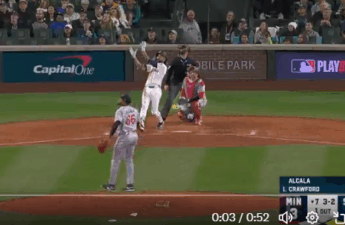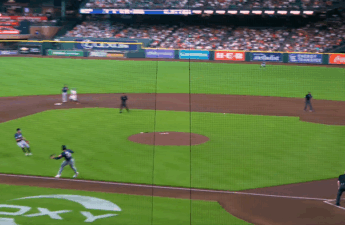“And I love this place
the enormous sky
and the faces, hands
that I’m haunted by
so why
can’t I forgive these buildings
these frameworks labeled home”
-Weakerthans, “This is a Fire Door Never Leave Open”
Anything becomes rote if you do it often enough. That venturesome drive that seems so long and nuanced and strange becomes old hat well before it even becomes fully classified as a commute. That activity you try, tenuously, once or twice becomes habitual once you’re on your sixth month of it. School, jobs, favored activities all devolved into a certain sameness after a time. There becomes a particular predictability, a rhythm that things adopt. And because our brains are pattern-seeking entities, because they strive to make connections and simplify things and relieve themselves of the duty of actually working hard on any given topic, they start to fill in the gaps with the fruits of a well-understood routine.
There’s the oft-cited study (series of stuides?) on how we actually read, that we don’t process each individual letter when reviewing a pre-written tome, but actually recognize the shape of words and simplify them into recognizable outlines, as though all languages were actually written in pictographs. It doesn’t take a study to think about this logically and recognize that you yourself do this – this is part of why typos are so pervasive and resist detection so frequently, especially in online media. We get used to reading faster and faster, skimming through things, and our brain wants to process the words in the ordered fashion it expects, willingly overlooking slight misalignments in favor of the desired pattern.
But despite the pervasive nature of pattern-seeking when it comes to its impact on language itself, there is perhaps no greater place for it than visiting the places of one’s memory. Homecomings, reunions, revisitations of places are more ensconced in the humble folds of the past than the bright outlook of the future. In returning to these hallowed grounds, we not only give ourselves the opportunity to examine our past for what it was, but we look at our present only through the lens of the past. It is impossible for me to look at Albuquerque entirely for the city it currently is, anymore than I could look at an old friend with the fresh eyes of the objective observer just meeting them. Every new object or signpost or commercial enterprise is in the stead of an old recollection of that same region, every change a repaving of sacred former states of being. The expectation of the past hangs heavy of the living, breathing dynamism of the present. A visit to the Frontier is laden with hundreds of prior approaches, the company kept therein, the psychology of the person who traversed those same floors and tables. A tread on the campus of a high school is a time-machine to a bygone era, each subsequent alteration of the landscape an oversharp note in an otherwise harmonious memory.
It is this pattern of, well, patterns, that perhaps makes the most important influences on our life those which deviate the most from such predictable behaviors. Conversations, for example, while sometimes falling into certain cadences or rhythms, almost always evolve and adapt to the way life currently is, to the people actually being engaged in the discussion. This also probably explains the pervasive impact of media – books, TV shows, movies, even the news all change over time and are dynamic and new, even when falling into rote outlines of a typical story arc or local news gambit. Even if I know the outline for this particular film or news piece, actually hearing the words and seeing the images is somewhat fresh, far fresher than revisiting a favored restaurant or living space. My brain is engaged in a different way by content that I don’t expect to be exactly the same and I’m able to see things more for what they are than what they were or might have been.
Which is not to oppose homecomings outright, but to put them in a certain context. Do I ever truly visit the Albuquerque of 2011? Probably not. I visit Albuquerque, 1993-2011, the summation of nearly two decades of context to a place that continually evolves and changes but wears the imprints of its impact on my life like so many kaleidoscopic sunglasses over my eyes. No wonder people enjoy travel so much, the ventures to a place where the truly unexpected can unfold before someone’s eyes, where one replaces the tired outline of expectation with the bold vibrance of the really new. And why others more laden in fear and the search for comfort shy away from such voyages, content instead to ensconce in a realm that is known and measured and can be aligned to one’s expectations in a carefully crafted way, well-worn and practiced.
The challenge, then, is to infuse the old with the new. To find a way to truly see the places of one’s birth or rearing or careful inculcation with eyes reborn to the possibility of the world at large. To visit a place not ignorant of its past impact on one’s perspective and careful memory, but at least open to its growth and change and development in new and exciting ways. Hard, possibly impossible, to do in short fortnight-length jaunts to a place so tiered in past recollections, but worth striving for nonetheless in the quest to constantly live as fully and robustly and openly as possible. Only in the light of the unsettled future can we truly make the tribulation of our past meaningful, worthwhile, and just maybe in validation of all the tremendous suffering that has led us here.
May your road home wind in new and unforeseen ways that nevertheless deliver you into a promising future.


